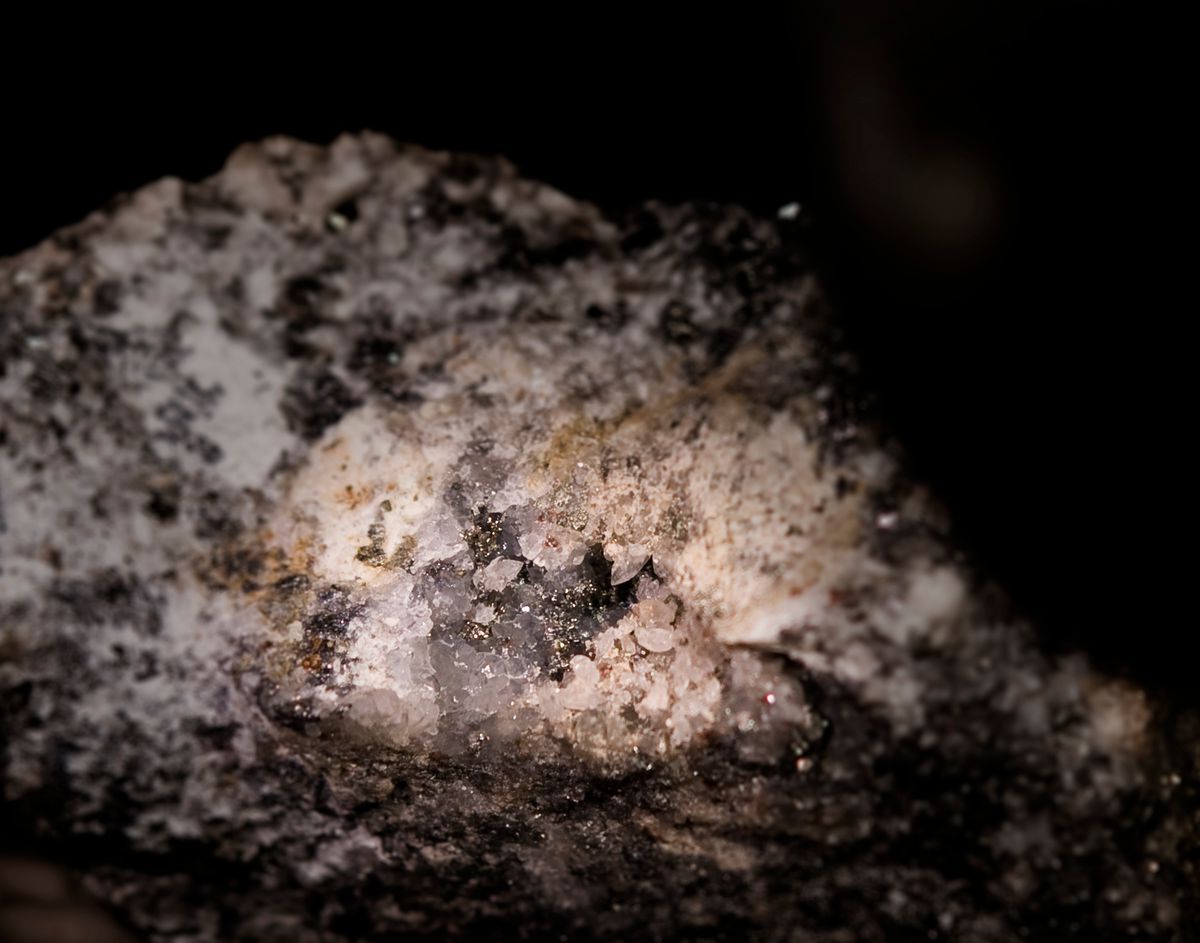
Petzite is a rare, intriguing mineral that has captured the interest of geologists and collectors alike. But what exactly makes it so special? Petzite is a silver-gold telluride mineral, often found in hydrothermal veins. Its unique composition and striking appearance make it a sought-after specimen. This mineral typically forms in cubic or massive shapes, boasting a metallic luster that can range from steel-gray to iron-black. Petzite is not just a pretty face; it also has significant industrial value due to its gold and silver content. Whether you're a budding geologist or simply curious, these 30 facts about Petzite will give you a deeper appreciation for this fascinating mineral.
Key Takeaways:
- Petzite is a rare mineral composed of gold, silver, and tellurium. It's found in unique locations like Transylvania and Cripple Creek, and is valued for its geological significance and aesthetic appeal.
- Identifying petzite can be challenging but rewarding. Look for its metallic luster, steel-gray to iron-black color, and perform a streak test to reveal its distinctive grayish-black streak.
What is Petzite?
Petzite is a rare mineral that often captures the attention of geologists and mineral enthusiasts. It has a unique composition and fascinating properties.
- Petzite is a telluride mineral composed primarily of gold and silver.
- Its chemical formula is Ag3AuTe2, indicating it contains silver, gold, and tellurium.
- The mineral was named after the Hungarian chemist W. Petz.
- Petzite typically forms in hydrothermal veins, often alongside other telluride minerals.
- It has a metallic luster and can appear in colors ranging from steel-gray to iron-black.
Where is Petzite Found?
This mineral isn't just found anywhere. Its locations are as unique as its composition.
- Significant deposits of petzite have been discovered in Transylvania, Romania.
- It is also found in the Cripple Creek district of Colorado, USA.
- Other notable locations include Kalgoorlie, Australia, and Ontario, Canada.
- Petzite often occurs in regions with a history of volcanic activity.
- It is usually associated with other minerals like calaverite and sylvanite.
Physical Properties of Petzite
Understanding the physical properties of petzite can help in identifying and studying this mineral.
- Petzite has a hardness of 2.5 on the Mohs scale, making it relatively soft.
- It has a specific gravity of about 8.7, which is quite high.
- The mineral exhibits cubic crystal system symmetry.
- Petzite is opaque, meaning light does not pass through it.
- It has a distinctive streak that is grayish-black.
Uses of Petzite
While not as commonly known as gold or silver, petzite has its own set of uses and significance.
- Petzite is primarily mined for its gold and silver content.
- It is often studied for its geological significance in understanding hydrothermal processes.
- Some collectors value petzite for its rarity and aesthetic appeal.
- It can be used in scientific research to study the properties of telluride minerals.
- Petzite samples are sometimes displayed in museums and educational institutions.
Interesting Facts About Petzite
Here are some intriguing tidbits that make petzite even more fascinating.
- Petzite was first described in 1845.
- It is often found in small quantities, making large specimens rare.
- The mineral can sometimes be mistaken for pyrite due to its metallic luster.
- Petzite's name is derived from the Latin word "petra," meaning rock.
- It is one of the few minerals that contain both gold and silver in significant amounts.
How to Identify Petzite
Identifying petzite can be challenging but rewarding for mineral enthusiasts.
- Petzite can be identified by its distinctive metallic luster.
- Its color ranges from steel-gray to iron-black.
- The mineral's hardness of 2.5 on the Mohs scale can help distinguish it from harder minerals.
- A streak test will reveal a grayish-black streak, which is a key identifying feature.
- Petzite's cubic crystal structure can be observed under a microscope.
Final Thoughts on Petzite
Petzite, a rare and fascinating mineral, offers a glimpse into the Earth's hidden treasures. This silver-gold telluride mineral, often found in hydrothermal veins, has intrigued geologists and collectors alike. Its unique properties, such as its metallic luster and high density, make it a standout among minerals. Petzite's association with gold mining adds to its allure, as it often indicates the presence of valuable gold deposits. While not commonly encountered, its discovery can lead to significant economic benefits. Understanding petzite's formation, characteristics, and uses provides valuable insights into the geological processes that shape our planet. Whether you're a mineral enthusiast or just curious about Earth's wonders, petzite is a reminder of the incredible diversity and complexity of the natural world. Keep exploring, and who knows what other hidden gems you might uncover!
Frequently Asked Questions
Was this page helpful?
Our commitment to delivering trustworthy and engaging content is at the heart of what we do. Each fact on our site is contributed by real users like you, bringing a wealth of diverse insights and information. To ensure the highest standards of accuracy and reliability, our dedicated editors meticulously review each submission. This process guarantees that the facts we share are not only fascinating but also credible. Trust in our commitment to quality and authenticity as you explore and learn with us.
